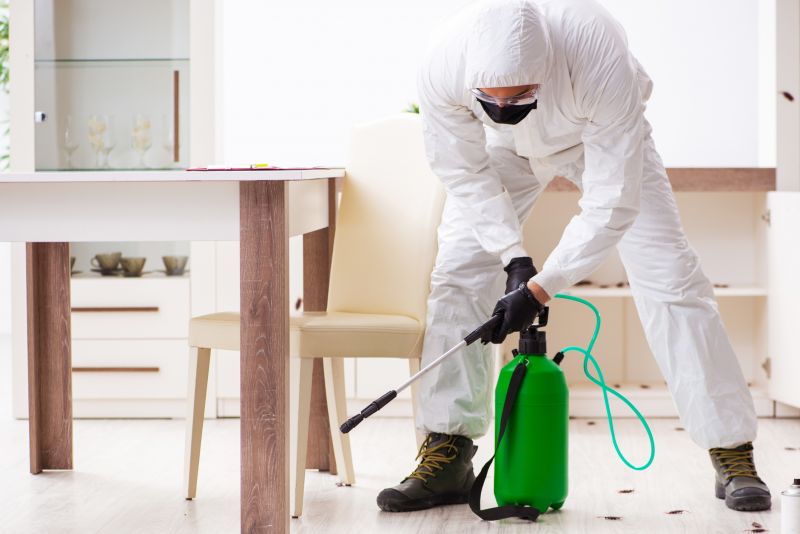Expert Picks For Toad Extermination Tools And Solutions
Get insights into the most recommended products that help you control toad populations with ease and efficiency.
 Dealing with toads in outdoor spaces can be a common concern for homeowners and gardeners alike. Toads often inhabit lawns, gardens, and areas with abundant moisture, where they can sometimes become a nuisance or interfere with landscaping efforts. Fortunately, there are a variety of products designed to help manage toad populations effectively. These products range from physical barriers and repellents to traps and deterrents, each suited to different situations and preferences.
Dealing with toads in outdoor spaces can be a common concern for homeowners and gardeners alike. Toads often inhabit lawns, gardens, and areas with abundant moisture, where they can sometimes become a nuisance or interfere with landscaping efforts. Fortunately, there are a variety of products designed to help manage toad populations effectively. These products range from physical barriers and repellents to traps and deterrents, each suited to different situations and preferences.
Top Overall Option
Ultrasonic Pest Repeller
An ultrasonic pest repeller emits high-frequency sound waves intended to deter toads and other pests without the use of chemicals. These devices are easy to install, typically weather-resistant, and can cover a broad area to help keep toads away from gardens, lawns, and patios. While effectiveness can vary, they are often considered a convenient, non-invasive option for outdoor pest management.
Types of Products For Toad Exterminations
Physical Barriers
Fencing and mesh barriers designed to prevent toads from entering specific areas, such as gardens or flower beds, by creating a physical obstacle.
Chemical Repellents
Repellent sprays or granules formulated to discourage toads from settling in treated zones, often containing ingredients that are unpleasant or irritating to amphibians.
Traps
Live capture traps that allow for humane removal of toads from your property, often utilizing bait or specific designs to attract amphibians.
Ultrasonic Devices
Electronic deterrents that emit high-frequency sounds intended to repel toads and other pests without chemicals.
Lighting Deterrents
Bright or flashing outdoor lights that make areas less inviting to toads, which prefer shaded, moist environments.
Landscaping Modifications
Adjustments such as removing mulch, debris, or standing water that create favorable habitats for toads.
Natural Predators
Encouraging or introducing natural predators like certain bird species to help control toad populations naturally.
Sound Devices
Devices that emit specific sounds or vibrations designed to discourage toads from inhabiting certain areas.
Repellent Plants
Planting certain herbs or plants believed to repel toads, such as garlic or marigolds, around problem areas.
Humane Removal Kits
Complete kits that facilitate safe catch-and-release of toads without harm, suitable for those seeking humane options.
Popular Choices
A frequently chosen device for outdoor areas, designed to emit sounds that may help deter toads and other pests.
Humane traps that capture toads for safe relocation, often favored for their simplicity and effectiveness.
Granular repellents applied around gardens or yards to discourage toad activity, popular for their ease of use.
Lights that activate with movement, making outdoor spaces less appealing to toads and other amphibians.
Removing hiding spots and standing water, a common step in reducing toad habitats and making areas less inviting.
Encouraging birds or other predators through birdhouses or feeders to naturally help control toad populations.
Devices that produce vibrations intended to disturb toads and make areas less attractive for habitation.
Planting herbs like garlic or marigolds around gardens to act as natural repellents for toads.
Tools designed for safe removal of toads, allowing for relocation away from problem areas.
Products that help eliminate standing water, reducing breeding sites for toads.
Reflective objects or tapes that create movement and light reflections to scare toads away.
Bright or reflective tape used to mark off areas and deter toads from crossing.
Sprays made from natural ingredients intended to deter toads from specific zones.
Choosing the right product depends on several factors, including the extent of the toad presence, the specific environment, and personal preferences regarding pest control methods. Some solutions focus on discouraging toads from settling in certain areas, while others aim to remove them safely. It is important to select products that are safe to use around humans, pets, and plants, and that align with local regulations regarding pest management.
In addition to physical and chemical options, there are also behavioral deterrents that can be employed to make outdoor spaces less attractive to toads. These might include certain lighting, sounds, or landscaping modifications. Combining different approaches can sometimes yield the best results, especially in areas with persistent toad activity.
Understanding the various product options available can help you make an informed decision tailored to your specific needs. Whether you prefer humane removal methods or deterrents that prevent toads from entering certain zones, there are solutions designed to fit a range of situations. Proper application and consistent use are key to effectively managing toad populations in your outdoor environment.
Key Buying Considerations
- Effectiveness in your specific environment and for your particular toad problem.
- Safety for children, pets, and plants when choosing chemical or physical deterrents.
- Ease of installation and use, especially for ongoing management.
- Humane options versus deterrents that may harm or kill toads.
- Coverage area of the product to ensure it addresses the size of your outdoor space.
- Durability and weather resistance for outdoor use.
- Potential need for multiple methods or products for comprehensive management.
- Local regulations regarding pest control and wildlife management.
- Environmental impact and safety considerations.
- Cost and long-term maintenance requirements.
- Customer reviews and effectiveness reports from other users.
- Compatibility with existing outdoor features and landscaping.
- Availability of replacement parts or refills if applicable.
- Brand reputation and product warranty or guarantee.
This page contains affiliate links. We may earn a commission from qualifying purchases to support our content creation.
